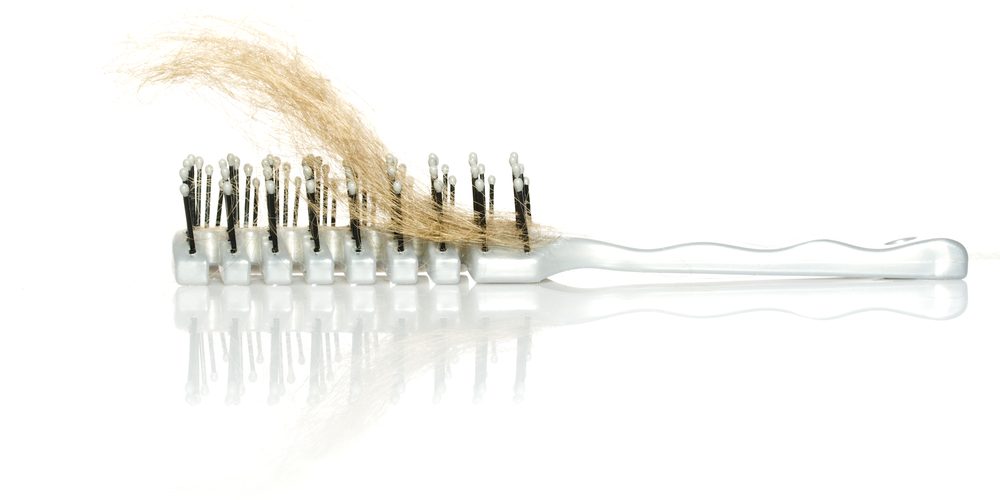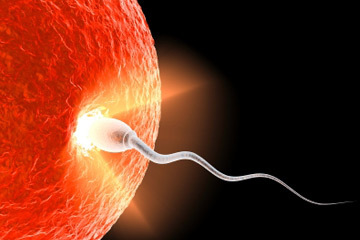Hair loss affects at least one fourth of the population. It is a very annoying and disfiguring problem, especially for women, who often suffer from it beginning around age 30 or so. Hair tissue mineral analysis (HTMA) and Nutritional balancing may often help this condition.
The imbalances listed below are associated with hair loss. Also mentioned in this article are why cancer chemotherapy can cause hair loss, and why rarely hair loss occurs during a nutritional balancing program.
As the causes are corrected, many clients report that their hair loss has stopped. If the condition is recent, the hair grows back in most cases. If the problem is longstanding, hair may not grow back, but it often will stop falling out.
CAUSES FOR HAIR LOSS:
DEHYDRATION
Dehydration can cause hair loss.
Reasons for dehydration are:
a) Not drinking enough water.
b) Drinking the wrong kind of water – usually reverse osmosis water, also called drinking water or purified water.
c) Certain habits dehydrate the body badly. These include the use of caffeine in any form or amount, sugar in any form, and any use of alcohol.
NUTRIENT DEFICIENCIES
Hair is called a soft tissue, and is also considered a connective tissue of the body. It is similar in composition to skin, fingernails, toenails and other connective tissue. These tissues require many nutrients, particularly B-complex vitamins, vitamins C and E, sulfur, calcium, magnesium, zinc, bioavailable copper and others.
Those with hair loss should first make sure they are well-nourished. In addition, many people’s state of nutrition is so poor that they require a number of food supplements. These are best recommended in a nutritional balancing program based on a hair mineral analysis test result.
Zinc and RNA Transferase
Zinc is required for RNA (ribonucleic acid) transferase; an enzyme involved in DNA (deoxyribonucleic acid) synthesis, or synthesis of all body proteins. Impairment of zinc metabolism will affect all protein structures of the body. Zinc is also required for synthesis of carboxypeptidase; a digestive enzyme required for digestion of dietary protein.
Copper and Lysyl Oxidase
Lysyl oxidase is a copper-dependent enzyme involved in connective tissue synthesis. Copper imbalance often leads to lackluster hair and hair loss. Excessive copper, by interfering with the sulfide bonds in the hair, literally causes dissolution of the hair structure. This may cause certain individual’s hair not to hold a permanent.
Copper is also required for tyrosinase; an enzyme required for melanin production. Melanin is a pigment substance which gives color to the hair.
B-Complex Vitamins
Many hair products contain B-complex vitamins, especially vitamin B6, PABA and biotin. These vitamins are involved with amino acid metabolism. Amino acids are the building blocks from which proteins are constructed.
Mucopolysaccharides
Mucopolysaccharides are a group of connective tissue compounds that have been found helpful to the growth of hair. Their synthesis depends on the bio-availability of copper and other nutrients.
Other Important Nutrients
Deficiency of sulfur, vitamin B6 and B12 have also been shown to cause hair loss. Exceedingly high dosages of vitamin A can also cause hair loss.
BODY CHEMISTRY AND HAIR LOSS
Fast Oxidation
Fast oxidizers have elevated sodium levels. Sodium is eliminated in part through the skin and hair. You may notice a salty taste to your skin if you are a fast oxidizer.
The first inch or two of the hair represents a section of active growth where minerals can be stored and called upon during stressful periods. As sodium accumulates in the tissue, it can ‘petrify’ the hair follicle resulting in hair loss.
Fast oxidizers are also prone to a deficiency of copper and zinc, which may contribute to hair loss. Excessive male hormone production by the adrenal glands is also associated with a fast oxidation rate.
Fast oxidizers have low glycogen reserves and commonly convert some of their body protein to sugar to burn as fuel. Thinning hair in fast oxidizers can be due to the breakdown of hair protein for fuel. A loss of the hair protein is much better than loss of protein from vital organs and tissues.
Slow Oxidation
Hair loss in slow oxidizers is associated with excess or bio-unavailable tissue copper. A copper imbalance causes dissolution of the hair structure, resulting in impairment of hair growth and ‘lifeless’ hair.
An excess of tissue copper also contributes to low sodium levels in slow oxidizers. When the tissues are low in sodium, transport of vital nutrients into the hair follicle is impaired. When nutrients cannot be transported into the hair cells, hair loss will eventually occur.
An elevated copper level and/or adrenal exhaustion also causes calcium accumulation in the soft tissues of the body, including the hair. Calcium accumulation impairs transport across cell membranes, impairing the flow of nutrients to the hair.
Slow oxidation is also associated with sluggish thyroid activity, which is known to be associated with hair loss.
Blood pressure is often low in the slow oxidizer and circulation poor due to impaired adrenal and thyroid activity. Blood circulation to the scalp may be impaired, contributing to hair loss.
YIN DISEASE
Some women and some men with hair loss have a yin condition of the body chemistry. Yin means cold and expanded in Chinese medical terminology and in macrobiotics. If, for example, the hair shaft is slightly loose in the follicle, the hair may fall out much more easily than if the follicle were more contracted or more yang in Chinese medical terminology.
A yang rising condition is definitely associated with hair loss. A variant of a yin condition of the body is called in acupuncture terms yang rising. It occurs when the body is very yin, usually with a low thyroid condition, and then it reacts by trying to become more yang, but in a half-hearted or inadequate manner.
This pattern is revealed easily on a properly performed hair mineral analysis. It is called a four highs pattern. It occurs when four macrominerals – calcium, magnesium, sodium and potassium – are all above their ideal levels.
LOW PROTEIN DIETS
Hair is composed of keratin, a protein substance. One must have adequate protein in the diet, and one must digest and utilize that protein in order to properly nourish the hair. Protein deficiency causes a reduction in the linear rate of growth in the hair and in the diameter of the hair shaft, which causes the hair to shed easily.
This cause helps explain hair loss in cases of protein starvation, but it can occur just with a low protein diet, or a vegetarian diet of lower quality proteins.
A sodium-to-potassium ratio on a tissue mineral test below 2.5:1 is indicative of protein breakdown. Potassium is released from cells, causing the potassium level to rise relative to sodium. Since hair is a protein structure, excessive protein breakdown can cause hair loss.
PREGNANCY AND HAIR LOSS
Loss of hair frequently occurs in a woman just after delivering a child. The accumulation of copper during pregnancy depresses the thyroid gland, which will result in hair loss.
COPPER IMBALANCE
Most women and men who are losing their hair have a copper imbalance. Copper is absolutely required for connective tissue integrity, which includes the proper structure and function of the hair. Often those with hair loss have symptoms of copper imbalance such as varicose veins, migraines or other headaches, PMS, mood swings or others.
Vegetarian diets are also known to worsen copper imbalances. Anyone who becomes zinc deficient usually develops excessive copper, and anyone with weak enough adrenal glands develops a copper imbalance.
The connection between copper imbalance and hair loss may also be related to thyroid and adrenal imbalances and hormonal hair loss problems.
THYROID AND ADRENAL IMBALANCES
Medical science knows well that a low thyroid causes dry, brittle and usually falling hair. A thyroid imbalance can be subtle, and the T3, T4 and TSH levels may appear normal in the blood serum.
The alopecia of hypothyroidism is well known. Thinning of the hair is one of the recognized signs of low thyroid activity. On a hair analysis, high calcium is an indicator of lowered thyroid activity.
Reasons for thyroid imbalance include low iodine, high mercury or copper, other toxic metals in the body, or high levels of the iodine antagonists – bromine, fluorine and chlorine. Rarely, other factors are important such as infections like Hashimoto’s thyroiditis, and others.
All of these are very common today. The answer is not to take thyroid hormones. These are very rarely needed. Instead, a properly designed nutritional balancing program will correct the problem and restore normal thyroid function. In fact, taking replacement thyroid hormones slows or even stops full healing.
On hair mineral analysis, a low thyroid is revealed by a slow oxidation rate, and more specifically by an elevated calcium/potassium ratio. This indicates a low thyroid effect, even if the levels of thyroid hormones are normal. In other words, one may have plenty of thyroid hormones, but they are not acting at a cellular level in the proper way. For various reasons, the hormones are less effective.
IMPAIRED CIRCULATION INVOLVING THE SCALP
This is rather common with men, in particular. It can cause male pattern baldness, or even complete baldness. Causes include tension in the fascia or even the muscles of the neck that impairs circulation to the scalp.
One could have arteriosclerosis of the arteries leading to the head or scalp.
A properly designed nutritional balancing program will help with generalized tension in the neck and back, and will slowly reverse arteriosclerosis and atherosclerosis if that has set in.
CALCIUM OR OTHER TOXIC DEPOSITS IN THE HAIR FOLLICLES
Another imbalance seen on a few hair mineral analysis is a buildup of what is called metastatic or biounavailable calcium in the soft tissues of the body, which can include the skin and hair follicles. This could also cause dysfunction of the hair follicles and hair loss.
At times, other toxins will affect the scalp. These might be due to a skin care product such as a shampoo, hair dye or other product that is somewhat toxic. Other causes are iron, manganese or other chemicals in the water used for bathing and drinking. This cause for hair loss requires stopping the use of the toxic product, and perhaps filtering the bathing water if it is toxic, which is not common.
Rarely, elimination of a toxic metal, toxic chemical or old medical drug may damage the hair follicles temporarily, leading to some hair loss. This is unusual, but it does occur.
SCALP INFECTIONS
These sometimes contribute to hair loss. This is probably a more rare cause of hair loss.
ELEVATED DEHYDROTESTOSTERONE OR DHT
It has been noted that excessive male hormone levels can cause ‘male pattern’ hair loss in both men and women. Oddly, this kind of baldness can occur quickly in some women when they take the supplement, TMG or trimethylglycine. The apparent reason is that TMG has an anabolic effect, which means it may raise testosterone.
The women who experience hair loss may already be higher in dehydrotestosterone, and the TMG may just aggravate this situation.
Balancing body chemistry can often balance these hormone levels and restore hair growth.
STRESS
Stress alone can cause hair loss, usually due to nutrient depletion.
Frequently, hair loss occurs directly following a stressful situation. Stress can be physical, or it may be mental or emotional. Reasons for hair loss resulting from stress are:
- stress causes rapid zinc depletion,
- in fast oxidizers, copper is lost also under acute stress,
- in slow oxidizers, copper can become biounavailable due to stress,
- stress can impair blood circulation to the scalp,
- stress impairs protein digestion and utilization,
- stress increases the demand for many “B” vitamins, which can lead to a deficiency.
CHEMOTHERAPY AND HAIR LOSS
Certain cytotoxic drugs used in cancer chemotherapy result in hair loss. A reduction of hair loss can be observed in those persons undergoing chemotherapy when supplementary nutrients are given along with the chemotherapy. The loss of hair associated with chemotherapy may be due to nutrient deficiencies, or imbalances, induced by the drug therapy.
A COMPLETE NUTRITIONAL BALANCING PROGRAM IS BEST
Correcting the factors above will usually stop hair loss. While remedies for the hair sometimes work, the most reliable way to stop hair loss is with a properly designed nutritional balancing program based on a hair tissue mineral analysis (HTMA).
One reason is that some of the causes, such as a copper imbalance, can be quite deep and hidden. They will not be revealed on any medical or holistic test, and must be slowly uncovered or unwound over a period of months or longer. Only the proper program will gently rebalance and rebuild the body chemistry.
Through a deeper understanding of the role of nutrients and metabolic balance in hair growth, it is often possible to prevent and even reverse the troubling symptom of hair loss.
Sources:











